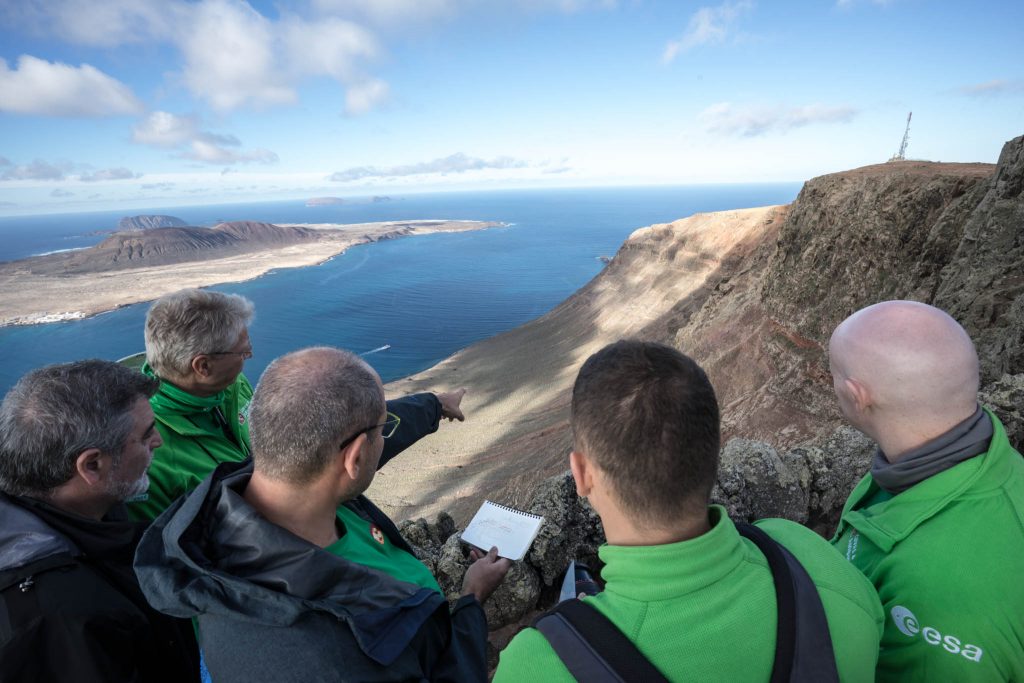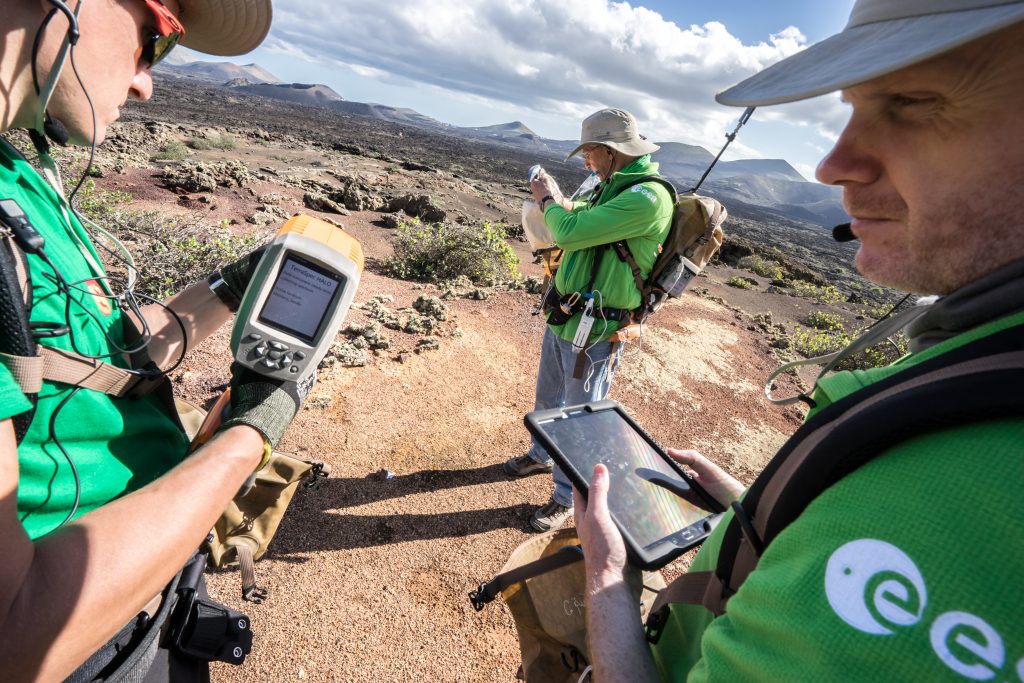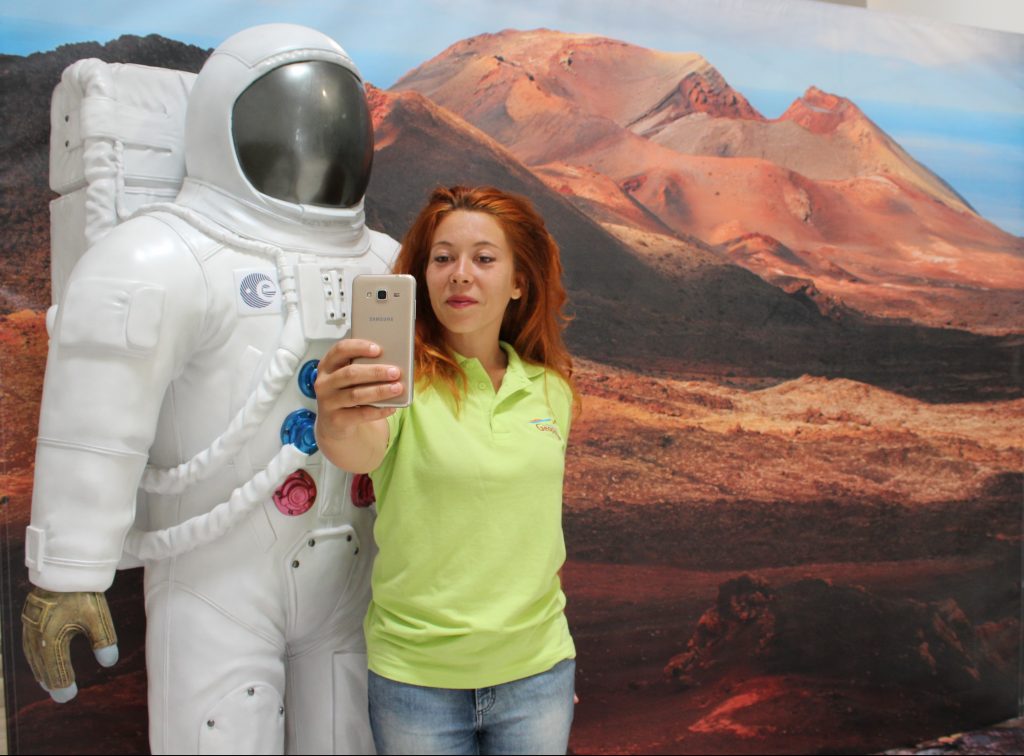Astronauts, astrobiologists and space engineers will continue to explore the volcanic landscapes of Spain’s Canary Island of Lanzarote to prepare for expeditions to other planets. An agreement between ESA and local authorities will keep the island as a training location until 2022. The subject? How to best explore other worlds.
ESA’s Pangaea training course provides introductory and practical knowledge to help crew members find interesting rock samples and traces of life on other planets. Lanzarote has been a stopover since its first edition, back in 2017.
The agreement to continue follows three years of fruitful collaboration between ESA, the Cabildo of Lanzarote and Lanzarote and Chinijo Islands Geopark, with the support of the IGEO’s Laboratory of Geosciences.
“We are delighted to say that the island remains the natural scenario of the Pangaea project. This is the most realistic way that we have to prepare ourselves to travel to space,” explains Loredana Bessone, Pangaea’s project leader.
“The Canary Islands are pearls in the middle of the Atlantic for planetary studies, and Lanzarote is the perfect environment to improve the efficiency of future expeditions to the Moon and Mars,” adds Jesús Martínez-Frías, professor of planetary geochemistry at the Geosciences Institute in Spain.
The well-preserved landscape, awarded with UNESCO Global Geopark status, hosted the latest training campaign in November 2018. The activities took place in a degraded area of the municipality of Tinajo that keeps the characteristics of the Earth’s crust intact and served to simulate the geological conditions of the Moon and Mars.
“The basalts we found make it a good analogue for the Moon, while the water-related minerals are useful for Mars habitability studies,” explains Jesús, who is also a Pangaea instructor.
Pangaea training includes the testing of technological tools for sampling and scientific analysis in the field, as well as the development of operational concepts for geological field activities.
“We not only bring astronauts, but also leading European scientists and state-of-the-art technology for training purposes,” explains Loredana.
The three-year experience also has also been documented visually. A photo exhibit with over 20 images from previous Pangaea editions now welcomes all passengers travelling to Lanzarote’s airport.
“We would like to show the wealth of research and technology development that have taken place here, but also share with the public why Lanzarote is so important for space future exploration,” says Elena Mateo, coordinator of Geopark Lanzarote.




Discussion: no comments